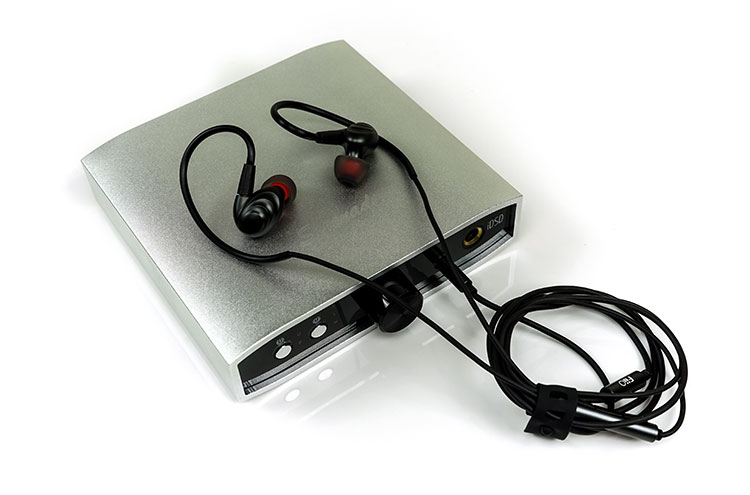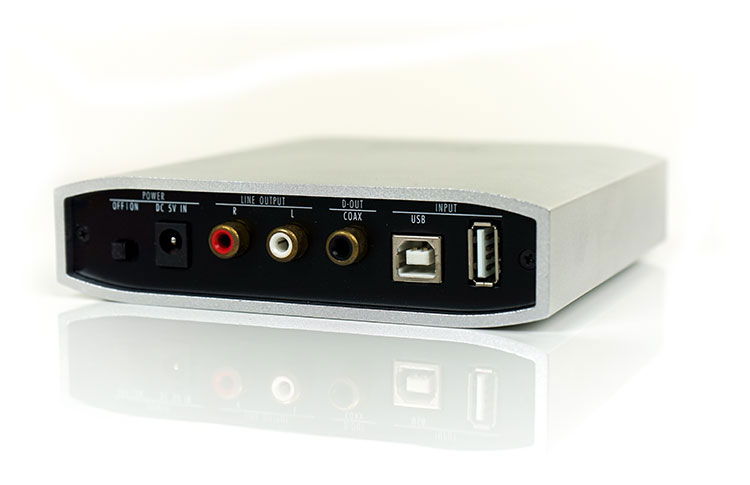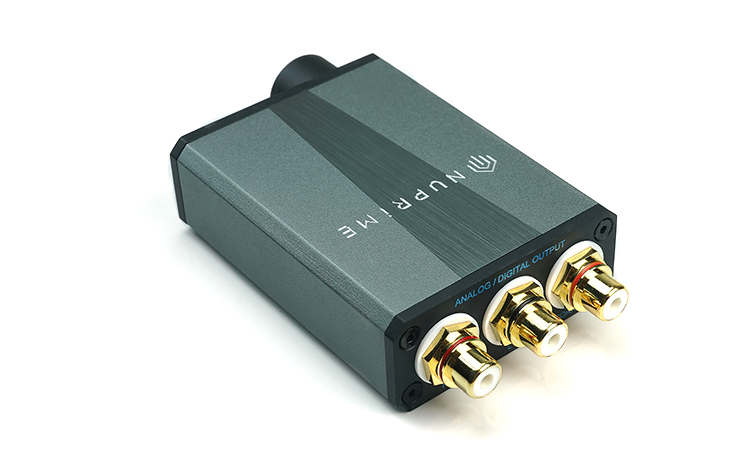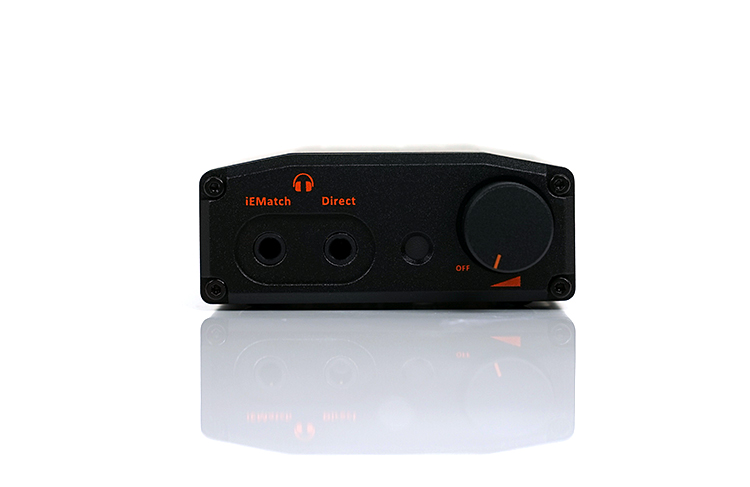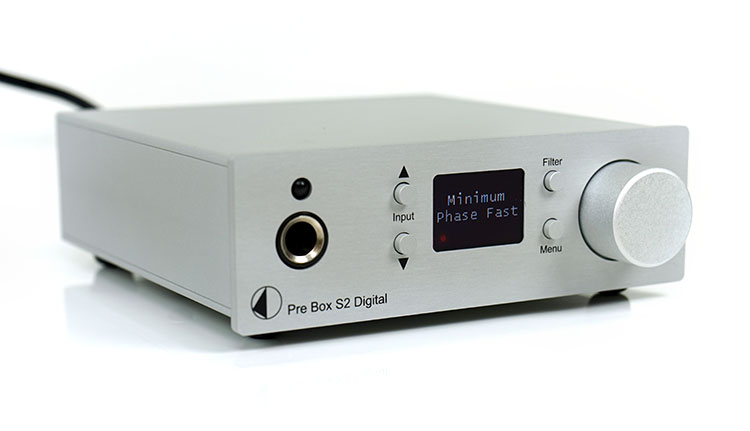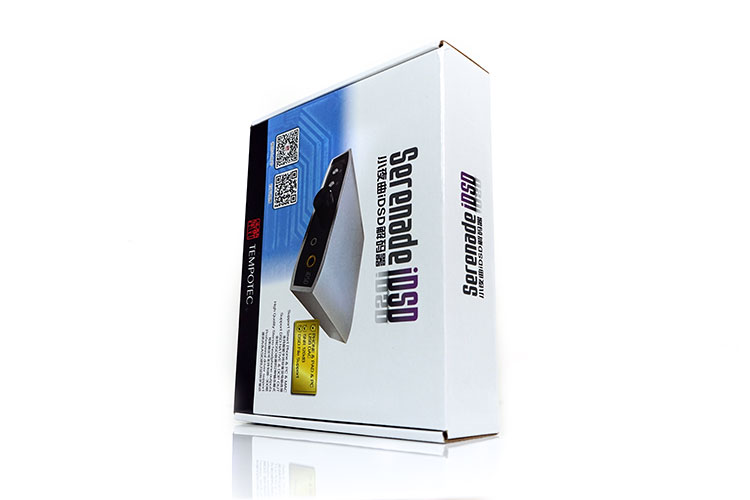Sound Impressions
Tonality & Presentation
The iDSD is actually a very nice performer for the price point. It has characteristics of a typical AK4990 implementation as well as displaying that little energetic uptick in the final octave of the TI operational amplifier.
Overall, this is a relatively musical presentation with an emphasized low-end signature, enhanced sub-bass power, a forward vocal presence as well as a clean and lively treble performance.
I have gone through a few AK4990 infused DAPs and DAC’s and I tend to find that in all signatures you get this lively and engaging low-end and the iDSD is no different in that respect. It has a better sub-bass presence and punchier sounding than say the $199 iFi Nano iDSD BL and will sound more forward and impactful with a good set of headphones.
Instrumental timbre is more on the netural side despite the excellent low-end power. They don’t lack body though and for me, the iDSD is anything but lean. Rather it is more of a cooler typical solid-state tone with a greater focus on energy and speed than any euphonic or laid-back delivery.
Once you start to move into the upper mids and lower treble the iDSD starts picking up some energy with a more forward sounding presence. Vocals are also forward but will have a slighter harder edge. Nothing harsh or overly sibilant, just not as liquid-sounding as the likes of the BL.
Percussion will have a bit of bite and presence but avoids sounding shrill or brittle. Overall the iDSD top-end provides a nice level of contrast to its punchy low-end.
Power
The iDSD can deliver up to 75mW into 600Ω so medium efficiency planars and dynamic headphones have plenty of headroom and will sound well driven plugged into the iDSD.
The dynamic range the iDSD can deliver is very good indeed. Especially on inefficient headphones that need that juice such as the Hifiman Sundara that sounded lively, engaging, and expansive. The emphasized low-end punch and extension of the iDSD is an excellent match also for bassier headphones such as the closed Sony MDR-Z1000 which at 24Ω is a cinch to drive on the iDSD.
The iDSD is also an excellent partner for both the MrSpeakers AEON and Aeon Flow with more than enough juice to power both of them to optimal levels.
That punch low-end really works a treat with the closed-back Aeon which I tend to prefer with EDM and Synth Wave genres. The AEON generates a bit more low-end power than the smoother but more rolled-off AEON Flow making it the choice of the two for heavy-hitting dance music.
At the same time the cleaner and energetic upper mids and lower treble of the iDSD pair really nicely with the AEON Flow which can sometimes seem veiled with darker or more attenuated sounding amps and sources. If you are rocking an HD650 the iDSD you get much the same outcome as the AEON Flow with that livelier upper mids and lower treble.
Efficiency
This to me is a major talking point of the iDSD, the big kahuna because it has a very low noise floor on even the most sensitive IEMs such as the Campfire Andromeda and Shure SE846.
However, this comes at a certain price because after testing I believe the output impedance of the iDSD might be quite high. Possibly to attenuate the noise but it does have consequences for IEM users, particularly at 30Ω and below and for those with complex crossover designs.
High Impedance Output
The iDSD output impedance is rated at 10Ω rm. Using an iFi IEMatch cable the Andromeda did deliver two unique signatures, one of which I am quite familiar with when plugged into high impedance outputs from the likes of the Shanling M2s.
Without the IEMatch cable, the Andromeda low-end loosed body and power and sounds quite flat with a greater mids and treble emphasis when paired with the iDSD. In short, it is shrill and bright and not a great match.
Throw in the IEMatch you get a much better bass response though the top end for me is a little too lively until you go to the Ultra setting of the IEMatch. Once in the Ultra setting, the sound is more natural with much better body and a lively but more controlled treble presence.
If you happen to be using a FIBAE IEM from Custom Art such as the 1, 2, or 3 then you are in luck. The impedance matching tech inside will render the output mismatch moot on the iDSD and your stock sound signature will not get skewed unnaturally.
Matchability
Active Speaker Pairing
No issues here with a set of Celsus SP One near-field active bookshelf speakers. The power delivery was good as well as being able to operate the iDSD as a pre-amp with a variable line signal.
The difference between the BT wireless signal the SP One can receive and the wired was palatable. Much better dynamic range, less volume required, and good clean treble. I say good clean treble because the SP One is a little soft and mid-centric. Often, I find they gel better with neutral or even bright signals to give the mids and treble a bit of a lift.
I did not notice any dip in resolution compared to other similar tier pairings such as the NuPrime uDSD. Going up a level though the iDSD is not quite as resolving as the iFi Miro iDSD’s analog output performance.
OTG Capability
iOS
With iOS devices such as an iTouch 6th Gen using iOS 11, I had no issues at all. Simply select the “P Lamp” option on the front control panel of the iDSD the plugin your USB-A/lightning cable to the iTouch and press play and it should transmit. In the iOS menu, it will identify the iDSD as a dock connector. All volume control is via the iDSD, there is no option to fine-tune on the iOS side.
Android
For Android, I initially couldn’t get it running due to the cable configuration required. The back of the iDSD is configured for a USB-A which requires an equivalent USB-Host compatible OTG cable with either a micro-USB or USB-C connection.
Unfortunately, the majority of my devices come with a female USB-A socket or a micro-USB but never a USB-A male. It would require a USB-A male to a micro-USB female converter.
One short shopping trip later and all was resolved with both smartphone and DAP able to successfully handshake with the iDSD. Using HiBy Music’s app on my G6 (USB-C adapter) or HiBy’s own R6 I had no issues receiving a signal using the iDSD.
I would recommend Tempotec throwing in a small OTG cable or adapter as part of the accessory kit though just to save on the hassle of buying one for OTG.
Select Comparisons
NuPrime uDSD
$179
Technical
The uDSD is a little more expensive than the iDSD and finished to a slightly higher standard. It is also much smaller though its functionality is similar to the iDSD as a transportable desktop experience since both need external power. That being said it can power up via a USB 5V connection whereas the iDSD needs a switching 5V DC supply so slightly more flexible.
The uDSD does not have OTG nor does it have a choice of 3.5mm or 6.35mm sockets, just a single 3.5mm socket. It does have dual RCA analog output so it can support active speakers and larger analog amps should the built-in headphone amp not suffice. Both have a coaxial output option.
The uDSD uses a fairly cheap and cheerful ES9010K2M compared to the AK4990 housed in the iDSD. Now the AK4990 is fairly cheap to acquire these days but I do rate it as a more capable DAC chipset than the ES9010K2M and more on the same level as the ES9018K2M.
That being said there is some irony as the uDSD will handle up to DSD256 whereas the iDSD is limited to DSD128. For PCM much the same limitation with 32BIT/192K compared to the uDSD’s better-performing 32BIT/384k.
Performance
The iDSD 75mW into 600Ω and higher output impedance is better suited to headphones though low noise floors using IEMs is indeed excellent. You just have to watch out for low impedance skew sub 30Ω. The uDSD is nowhere near as powerful at 140mW @ 32 ohms but does have a lower output impedance.
Unfortunately, that does not translate into an ideal performer for efficient gear as the noise levels are much higher on the uDSD than the iDSD. This renders them a poor match for most IEMs. The iDSD will deliver a much black background as a result. You will need an IEMatch cable to reduce that hiss from the uDSD.
Tonally the uDSD is a more traditional Sabre sound. This is a clean and evenly balanced presentation with a slight tonal bias to the lower treble but overall a fairly neutral tonal quality to its timbre. The low-end is a little light on power and impact though it does remain largely linear.
The iDSD hits a bit harder on the low-end with a more neutral lower mids to mids, a forward vocal, and an energetic lower treble. It does not suffer hugely from glare though it has a slightly harder edge to its treble response than the newer ES9028 series chipsets.
Using an IEMatch 3.5mm cable for the uDSD does bring in a bit more body to the low-end and mids and softens the treble remarkably. Makes it a much more competitive signature. It still is not as punchy but the timbre is richer and the low-end is fuller sounding.
iFi Nano iDSD BL
$199
Technical
The Nano iDSD BL is pitched a bit more for the mobility sector than the iDSD and is just marginally bigger than the uDSD. Both are tiny compared to the iDSD. It runs either from a battery or USB so it is very flexible and pocketable.
The iDSD is much more desktop orientated with dual RCA out compared to the BL’s single 3.5mm line out. The iDSD also offers OTG and coaxial digital output whereas the BL only offers OTG via USB host.
The BL does offer more tonal tweaking capability than the iDSD and critically for IEM users has an in-built IEMatch 3.5mm output. The iDSD’s high impedance output means that like the BL it is wonderfully quiet but unlike the BL you do not have a choice of output. IEMs do require an IEMatch cable to avoid low-z skewing.
The iFi Nano iDSD BL uses a Burr-Brown PCM1793A DAC for bit-perfect output. It will also handle decoding up to DSD256 and including DXD 384/352.8kHz. It will decode PCM up to 32BIt/384kHz also. Critically it will render MQA files using MQA 88.2/96/176.4/192kHz filters. It is an altogether more modern digital audiophile solution in that respect compared to the iDSD.
Performance
The iDSD has a stronger sub-bass presence and a fuller-sounding low-end. It also has a more forward vocal and neutral to slightly more forward treble response. It has much more of an energetic solid-state sound than the BL’s presentation.
Timbre on the iDSD has a little more harmonic balance and a reasonably neutral tone though upper mids and lower treble pitching is a little cleaner and harder sounding than lower midrange instruments which benefit a bit from a stronger fundamental. The TI operational amp does seem to pick up a little energy in the final octave so it is a tiny bit airier with more headroom than the BL.
In contrast, the BL has a warmer, richer timbre with a generally sweeter sounding tone though it does not sound as airy as the iDSD. Instead, it gently rolls off a little more in deference to producing a smoother and more relaxed sound.
Power also makes a difference between the two using harder-to-drive headphones. The iDSD’s better power will produce a more expansive presentation on the likes of the Hifiman Sundara with better instrumental separation than the BL.
Project Debut Pre Box S2 Digital
$499
Technical
You pay more and you do get a bit more but the principle is the same with both the iDSD and the S2 Digital (S2D). Both are transportable and both need an external power supply. Like the iFi Nano iDSD BL, the S2D can operate off a USB 5V supply but sounds better with its switching DC power supply.
The iDSD can only run on its DC. Both will output analog via dual RCA for pairing with active speakers or larger analog amps. The S2D, however, does not have a digital output, only digital inputs including USB-DAC, optical and coaxial.
Decoding
The S2D, however, is much more advanced in terms of user tweaking than the iDSD with an LCD panel interface, digital filter options, and harmonic distortion compensation.
It also uses a bang-up to date ES9028Q2M chipset boasting a much higher decoding rate than the iDSD’s AK4490. The S2D can handle lossy and lossless right up to DSD512 and PCM at 32BIT/768kHz via USB. It will also handle up to 24bit/192kHz for its optical and coaxial inputs. It will also fully unfold MQA up to 192k.
Performance
The iDSD holds the cards in terms of power. The S2D puts out a rather tame 68mW into a 32Ω compared to the iDSD’s 75mW into 600Ω. The S2D will struggle for high ohm headphones and planars and will not scale these as well compared to the iDSD.
Both are low-noise (S2D a little lower) with efficient IEMs but the S2D has a lower output impedance so it will not skew low ohm earphones and does not require something like IEMatch to avoid low-z skew.
Overall the S2D is a more balanced sound signature and the more resolving of the two with better dynamic range, at least with IEMs. Its low-end is more linear than the more bombastic delivery of the iDSD but in turn, the S2D has the better definition and layering for my money.
I also detect a little bit more of a natural timbre in the mids with the S2D and slightly less energy in the upper mids and lower treble. The iDSD will be the more engaging and musical of the two with a more aggressive and forward vocal and lower treble but the S2D is the smoother and more refined of the two with better detail retrieval.
If anything, the iDSD will simply sound that bit brighter in the top-end. The new ES9028 series of chips have done a great job of addressing older glare issues and as a result, they are smoother to my ear than a few years ago.
Our Verdict
I got a lot more than I expected with the Serenade iDSD. Truth be told at $130 this is a bit of a bargain for headphones and active speaker users. It stays relatively true to that AK4990 sound which I like also.
This is a musical, energetic solid-state signature with more than enough power and headroom for decent planars and portable headphones. It also has an excellent and very low noise floor for efficient gear which competitors like the uDSD from NuPrime do not have. The addition of OTG is a nice bonus also.
The niggles? A high impedance output rating will skew the low-z on efficient headphones. I suspect this is where the iDSD gets that low noise floor more than anything else. You do need an IEMatch 3.5mm cable for the likes of the Campfire Andromeda or anything below 30Ω.
Also, the use of a USB-A for OTG is a little awkward for me personally and perhaps quite a few more out there. The primary hook-up here is geared more to iOS devices than Android. You will need converters for OTG.
Overall though the iDSD is a solid no-risk transportable DAC/Amp that will pretty much give everyone a little something right from their desktop without breaking the bank.
Serenade iDSD Specifications
- DSD (Direct Stream Digital): Yes
- Type: USB DAC& Amplifier
- Body Material: Metal
- Input Type: USB&PHONE
- PCM: Yes
- Model Number: Serenade iDSD
- Recommended Headphone Maximum Impedance: 32-300 Ohm
- Bluetooth: No
- Output Power: 75mW / 600 ohms
- Built-in Battery: No
- Output Type: HEADPHONE 3.5&6.3 ,RCA ,COAXIAL (PC ONLY)


